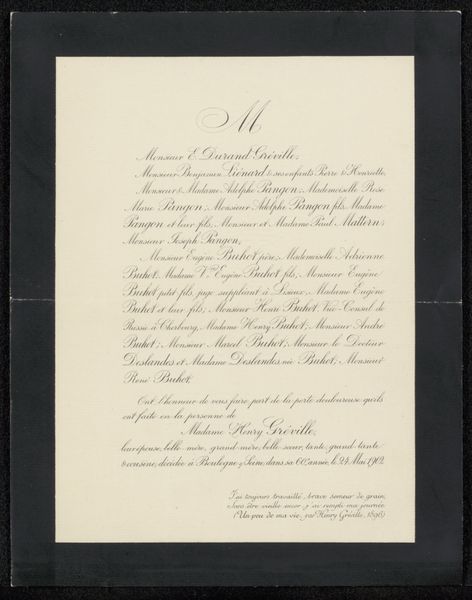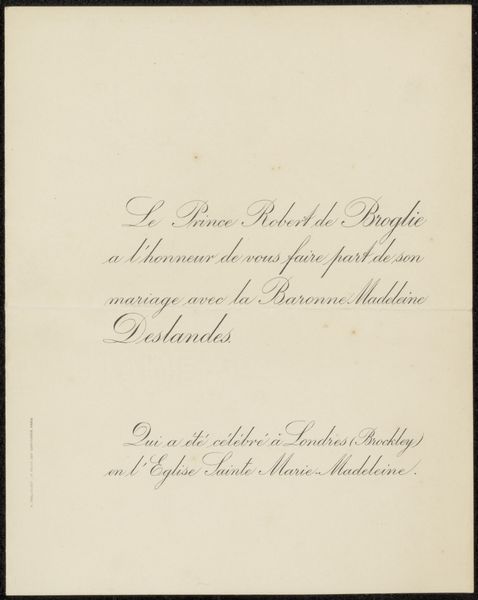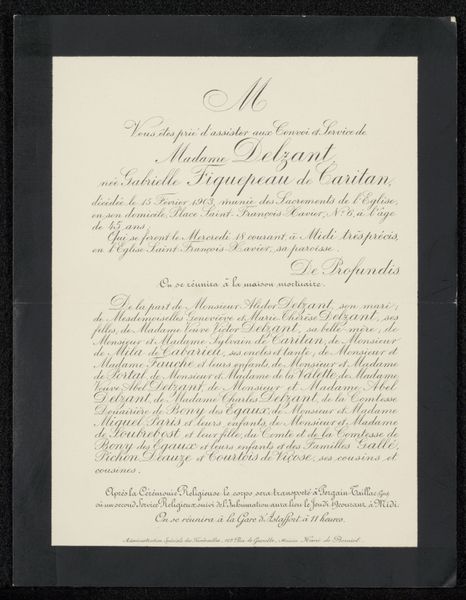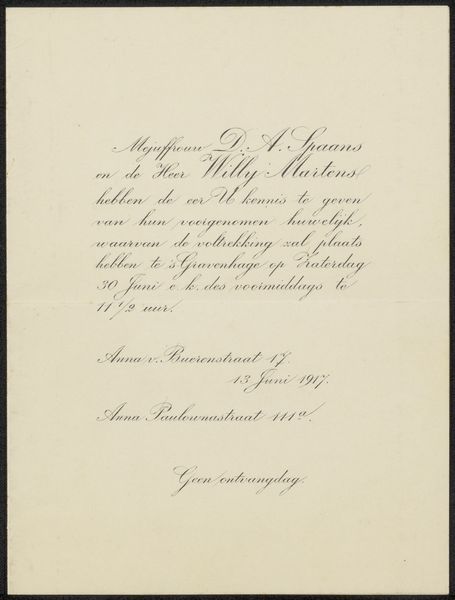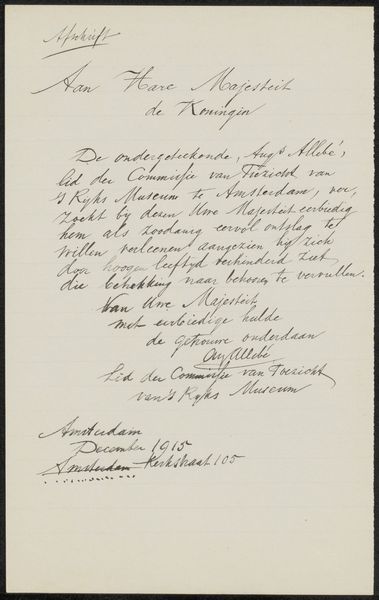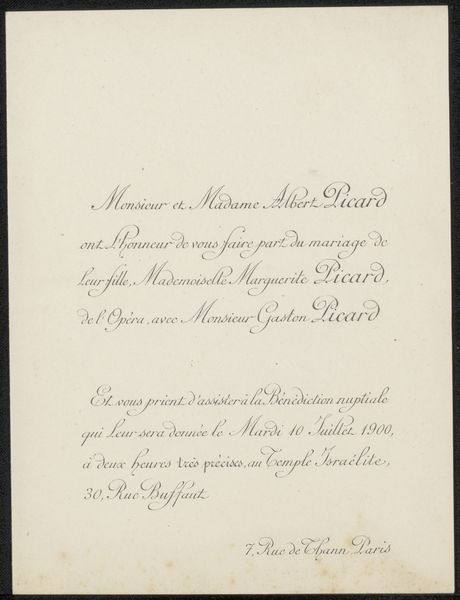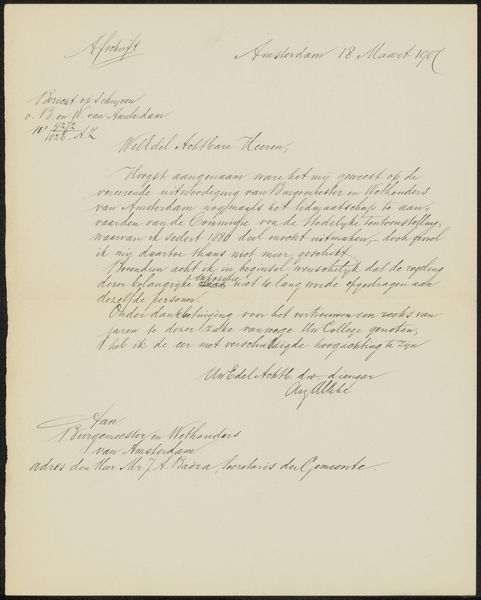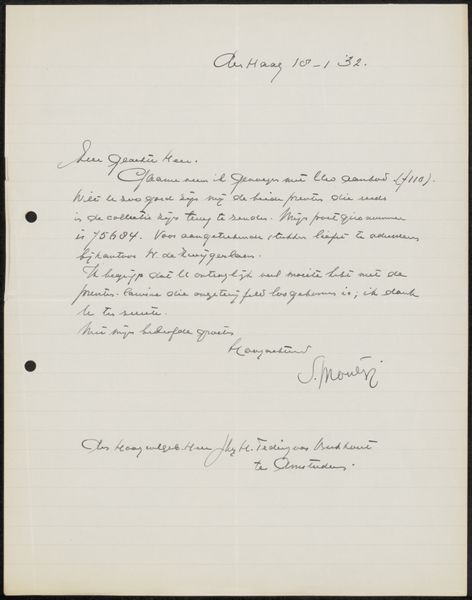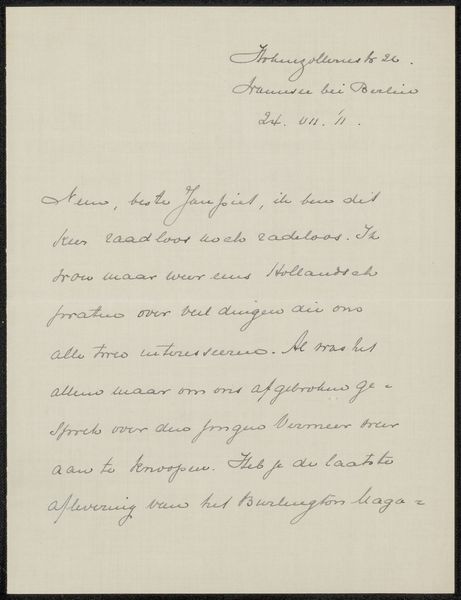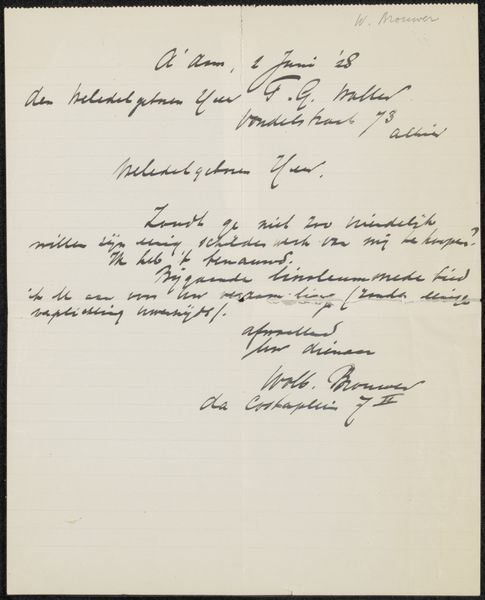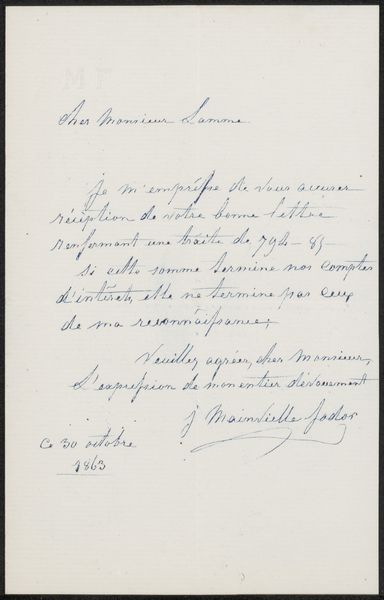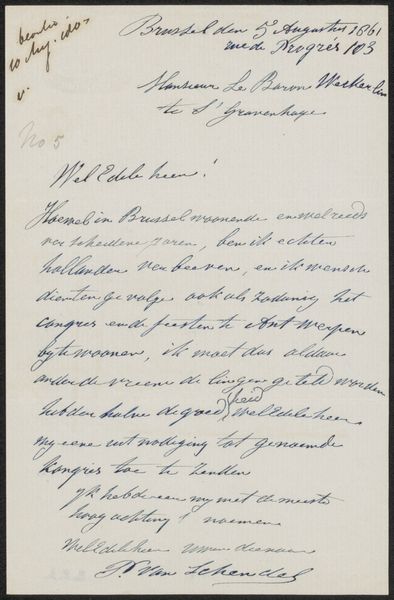
paper, ink
#
hand-lettering
#
hand drawn type
#
feminine typography
#
hand lettering
#
paper
#
ink
#
intimism
#
calligraphy
Copyright: Rijks Museum: Open Domain
Curator: This lovely piece, residing here at the Rijksmuseum, is entitled "Huwelijksaankondiging aan Philip Zilcken," which translates to "Wedding Announcement to Philip Zilcken." It's believed to date from somewhere between 1902 and 1924 and employs ink on paper. Editor: It strikes me as very intimate, despite being a formal announcement. The hand-lettering gives it such a personal touch, like a cherished keepsake more than a printed formality. Curator: Precisely. Wedding announcements, invitations, and correspondence of this era served not just as practical communication, but also as carefully crafted displays of social standing and personal taste. The art of calligraphy itself was highly valued. Editor: Looking closer, there's also a conscious rejection of industrialization here. The handcrafted nature signals a certain status – the ability to afford such personalized touches in an era when printed announcements were becoming increasingly common. Did Zilcken hold a particular status? Curator: Philip Zilcken, yes, he was a known Dutch artist, art critic, and etcher, so it stands to reason that those announcing the marriage would endeavor to impress this particular invitee with their appreciation of refined aesthetic. Editor: It’s interesting how even within the context of what seems like a celebration of love and union, the undercurrents of class and social performance are so visibly present. Note even the inclusion of "Geen receptie"—'No reception' indicated at the bottom—such information would have been specifically relevant to select invitees only. Curator: Absolutely, the announcement becomes an object loaded with codes that speak volumes about the social landscape of the time, particularly concerning Dutch bourgeois society. Note, too, the intimist artistic trend reflected within such delicate, deliberately crafted works. Editor: Considering the historical era when ideas surrounding marriage were undergoing a seismic shift and feminist activism was gaining traction, it raises questions. To what extent did social expectations around marriage bind individuals to restrictive gender roles, or alternatively, how was personal style or agency exercised within those boundaries? This document, while pretty, also feels loaded with those complex negotiations. Curator: Indeed. Analyzing everyday documents such as this allows one to gain new perspectives. I had not looked at it this way previously, yet doing so enhances understanding by providing the context. Editor: It highlights the critical need to understand art within its own complex time. Thank you.
Comments
No comments
Be the first to comment and join the conversation on the ultimate creative platform.
